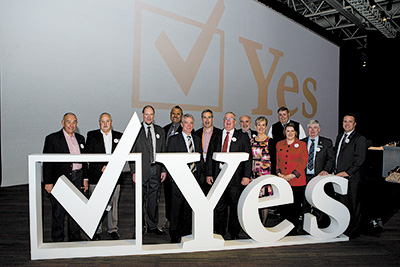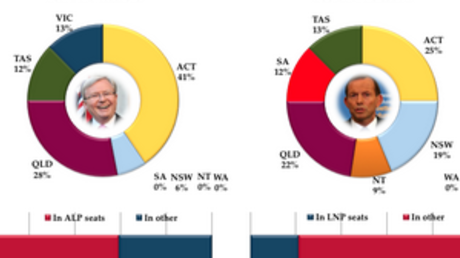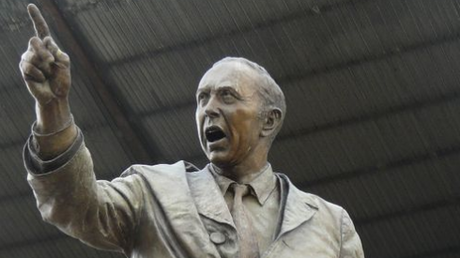LET US rejoice! A September 7 election means the referendum on local government financing cannot proceed on the same day. This is a good thing. Put simply, there was no compelling reason to vote yes, and many compelling reasons to vote no.
This referendum was not about recognising the existence of the vibrant and valuable tier of local government. Nor was it a minor update to reflect reality.
 The referendum would have asked Australian voters to change the constitution to authorize the Commonwealth parliament to make direct payments to local government bodies (a very vague term) on such terms and conditions as theparliament sees fit.
The referendum would have asked Australian voters to change the constitution to authorize the Commonwealth parliament to make direct payments to local government bodies (a very vague term) on such terms and conditions as theparliament sees fit.
The proposed change would have reduced state oversight and given virtual carte blanche to the Federal Government to pork barrel directly into local councils and potentially other entities. This explains the broad support for the constitutional change from the Nationals and independents in addition to much of the Labor and Liberal parties.
It was a direct response to recent High Court rulings that raised questions about the constitutional validity of the Commonwealth bypassing the states to give direct payments to local governments to fulfill Commonwealth policy priorities. In both the Williams (“school chaplains”) and Pape (“$900 tax bonus”) cases, the High Court vociferously condemned the Commonwealth government for using its financial clout to do whatever it wants, regardless of its constitutionality.
This referendum was also part of the agreement the Gillard government forged with the independents to ensure their support in the hung parliament.
The proposed change would have reduced state oversight and given virtual carte blanche to the Federal Government to pork barrel
But such constitutional change is completely unnecessary. The Commonwealth can (and does) legally provide money to local governments for services and infrastructure through tied grants to the states. It is a system that has worked well since 1922 in all but one regard: it is more difficult for the Commonwealth to claim direct credit without direct payments.
As constitutional scholar Anne Twomey noted in her exhaustive study on this subject, most supporters of the proposed constitutional change (by and large members of local government bodies) think it will result in “rivers of gold”. But this could just as easily become “rivers of tears” depending on Commonwealth government budget decisions. When Paul Keating changed the way he allocated direct funding to local government as part of his budget deficit reduction strategy, local government’s projected increase in funding dropped from 25 per cent to 3 per cent. In other words, local governments would go from having the most stable revenue of all levels of government, to one highly subject to the vagaries of federal budget balancing.

Furthermore, Commonwealth funding would have come with big strings attached. Funding for local services and infrastructure would have been influenced by what Canberra thought was best, thus reducing local governments’ ability to respond to the specific needs and wishes of their communities and therefore weakening local democratic accountability.
The absence of local government in our Constitution is no reason to include it. The apex of our political system – the prime minister and cabinet – is similarly absent. Their absence does no damage and arguably increases the flexibility of our political institutions, allowing them evolve organically in response to changes in society, the economy, and the preferences of citizens.
An overly prescriptive constitution can become a straight-jacket. Amendments that seemed a good idea at the time (such as the right to bear arms in the United States) can, over time, gather new meaning and become obstacles to necessary reforms in the future.
Constitutional scholars have reasoned that this “minor update” would likely conflict with sections 52 and 114 of our constitution, requiring additional changes – and thus additional referendums – to clarify and make the constitution functional once more. Given only eight of 44 referendums have been successful, we could have been left in a big, constitutional mess.
Australians voters have sensibly rejected this proposed change twice at previous referendums. Early evidence suggests it would have failed a third time this year if held.
$75 million had been allocated from federal and local government coffers for the referendum, including a whopping $10 million to campaign for the government’s ‘yes’ case and a comparatively miserly $500,000 for the ‘no’ campaign. (The ‘yes’ campaign would have been further bolstered by an $11.6 million civics education program which the government admitted would include advocacy of the “strong benefits” of giving tied grants to local governments.)
This money - or what’s left of it – should now be returned to government treasuries to improve what voters care most about – such as health, education, aged care, disability care, climate change, and the budget deficit.
The proposed constitutional change was dressed up as a harmless update and feel-good recognition of local government. But it was completely unnecessary, and posed a hornet’s nest of accountability problems with potentially deleterious affects on local governance, services and infrastructure.
Further reading:
Why Local Government needs to be recognised in the Australian Constitution (ALGA)
Alternative Yes/No Case (Constitutional reform Unit, Sydney Law School)




